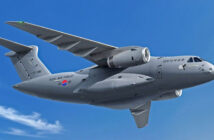A 21st century problem with 21st century tools needs a 21st century approach to training and tactics.
Seemingly every day we are bombarded with media reports of first responders being assaulted. Queensland Police recently put their reported figures at more than 200 officers assaulted per month with more than 60 per cent of police officers being assaulted in some locations. Assaults on paramedics and health workers occur frequently, something that was unthinkable in years past. When glancing over assault statistics the human factors are often ignored.
The costs go beyond time lost as a result of injuries and extend into the full spectrum of medium and long term stress and litigation. Calls for mandatory sentencing of violent offenders and first responder pay increases don’t address the problem and industry risk assessments indicate significant OH&S and liability concerns. Modern uses of force guidelines emphasise many incident management strategies that seek to limit the exposure to unnecessary risk and rightly so. Sooner or later however the first responder will need to use force in order to do their job or in self defence.
Unfortunately, most defensive tactics training is comprised of an array of martial arts tactics that were originally intended to cause injury. Many agencies have adopted OC spray, Baton and Taser for their staff and limited the use of some empty hand tactics. Standard defensive tactics training certainly wasn’t designed to integrate modern use of force options and nor was it designed to cater for an aggressive audience brought up on a diet of drugs and UFC. When lowest common denominator training fails or results in injury or excessive force, Officers face extensive scrutiny for employing those very tools and tactics they have been provided with.
With most training time allocated to force option tools, little has changed in regular departmental hands on defensive tactics programs in the last decade or two. Unfortunately, manufacturer’s training to operate their equipment is often inadequate to deal with the reality of deploying this equipment in a volatile dynamic confrontation.
The user should be trained to spontaneously recognise the need to escalate to these options and to recognise the opportunities for de-escalation as they present themselves in the fight. The user needs further skills should the applications of force option tools fail to control the situation. The same can be said for physical options that fail under pressure. This training must go far beyond a policy lesson and must consist of hundreds, if not thousands of physical repetitions in response to various stimuli.
To read the full story, go tohttp://www.australiansecuritymagazine.com.au/subscribe/ and purchase a subscription today!






